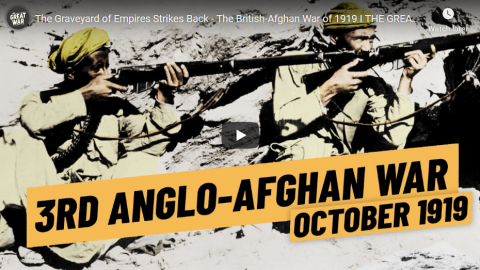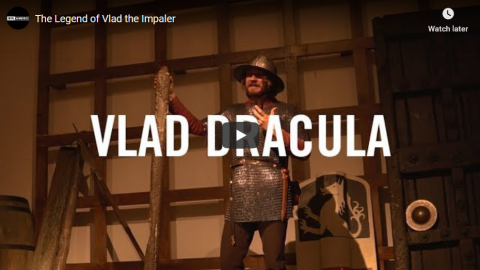Rex Krueger
Published 30 Oct 2019More video and exclusive content: http://www.patreon.com/rexkrueger
Get the Stanley Low-Angle plane (affiliate): https://amzn.to/2BP6dIy
(This is the Amazon link. Home Depot may have a lower price. That affiliate link is here: https://homedepot.sjv.io/ZDKNX)See me build my low-angle plane: https://www.youtube.com/watch?v=hwR0A…
Get the plans; build your own! https://www.rexkrueger.com/store/plan…
Plans, Links, and Hoodies: http://www.rexkrueger.com/store
Get my woodturning book: http://www.rexkrueger.com/book
Follow me on Instagram: @rexkrueger
October 31, 2019
Should you build or buy a low-angle plane?
“Big Lizzie” (HMS Queen Elizabeth) to sail into disputed waters in 2021
UK Defence Journal reported a few days back that the Royal Navy’s new aircraft carrier will take on her first active deployment in 2021, including a possible Freedom of Navigation exercise (FONOPS) in the South China Sea:
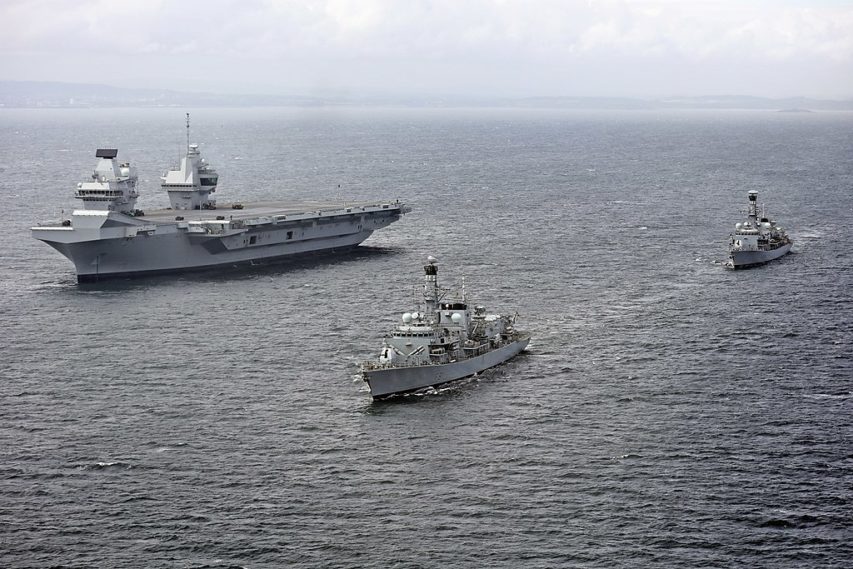
Aerial view of HMS Queen Elizabeth with Type 23 frigates HMS Iron Duke (centre) and HMS Sutherland (right) in June 2017 off the coast of Scotland.
Photo by MOD via Wikimedia Commons.
Commodore Michael Utley, Commander United Kingdom Carrier Strike Group, is reported by Save The Royal Navy here as saying that HMS Queen Elizabeth will be escorted by two Type 45 destroyers, two Type 23 frigates, a nuclear submarine, a Tide-class tanker and RFA Fort Victoria.
The ship will also carry 24 F-35B jets, including US Marine Corps aircraft, in addition to a number of helicopters.
Prior to the deployment, it is understood that the Queen Elizabeth carrier strike group will go through a work-up trial off the west Hebrides range sometime in early 2021.
When asked about whether or not the UK has enough escorts to do this without impacting other commitment, Defence Secretary Ben Wallace said:
The size and the scale of the escort depends on the deployments and the task that the carrier is involved in. If it is a NATO tasking in the north Atlantic, for example, you would expect an international contribution to those types of taskings, in the same way as we sometimes escort the French carrier or American carriers to make up that.
It is definitely our intention, though, that the carrier strike group will be able to be a wholly UK sovereign deployable group. Now, it is probably not necessary to do that every single time we do it, depending on the tasking, but we want to do that and test doing it. Once we have done that, depending on the deployment, of course, we will cut our cloth as required.
Gareth Corfield expands on this in The Register:
Although the initial plan was for Britain’s biggest ever warship to sail through the South China Sea, which China claims as its own territory in defiance of international laws and norms, and despite claims from at least six other countries including Vietnam and the Philippines, this detail was noticeably absent from the UKDJ report.
Over 200 islands, also subject to disputes between China, Taiwan, Vietnam, Malaysia, and the Philippines, also lie in the area, which stretches across 3.5 million square kilometres and is visited by one-third of the world’s shipping traffic.
A US presence on the South China Sea deployment will be a useful political tool for the administration as a show of strength to China as well as asserting the right to freedom of navigation in the sea. In addition, it reinforces the idea that the UK supports US foreign policy – Queen Elizabeth is effectively replacing a US carrier on her Far Eastern tour as part of the superpower’s standing naval presence.
Of the jets aboard QE, around half will be supplied by the US Marine Corps, as has been reported for years.
The Dutch Navy will definitely join the deployment, most likely with a De Zeven Provinciën-class frigate – replacing one of the British Type 23 frigates in the mooted carrier battle group. Similarly, UKDJ reckons that an American destroyer will join the 2021 deployment (named Carrier Strike Group 21), freeing up a British Type 45 destroyer.
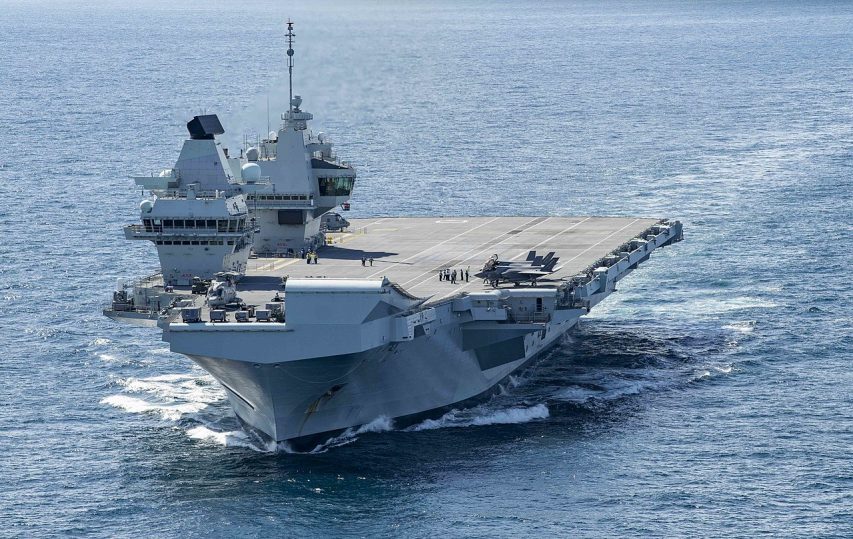
Royal Navy aircraft carrier HMS Queen Elizabeth (R08) underway in the Atlantic on 17 October 2019, participating in exercise “WESTLANT 19”. The first operational deployment for HMS Queen Elizabeth with No. 617 Squadron and a squadron of USMC Lockheed Martin F-35B Lightnings is planned for 2021.
Photo by Mass Communication Specialist 3rd Class Nathan T. Beard, US Navy, via Wikimedia Commons
The Graveyard of Empires Strikes Back – The British-Afghan War of 1919 I THE GREAT WAR 1919
The Great War
Published 30 Oct 2019Get 70% off NordVPN! Only $3.49/mo, plus you get two additional months FREE at https://nordvpn.com/thegreatwar and use code thegreatwar
Thanks to NordVPN for sponsoring this video – sponsorships allow us to make this show better and keep it free.» SUPPORT THE CHANNEL
Patreon: https://www.patreon.com/thegreatwar
Merchandise: https://shop.spreadshirt.de/thegreatwar/» BUY OUR SOURCES IN OUR AMAZON STORES
Our Amazon US Store: https://www.amazon.com/shop/influence…
Our Amazon CA Store: https://www.amazon.ca/shop/influencer…
Our Amazon UK Store: https://www.amazon.co.uk/shop/influen…» SOURCES
Adamec, L.W. Afghanistan, 1900-1923: A Diplomatic History, Berkley, 1967
Barthorp, Michael (2002) [1982]. Afghan Wars and the North-West Frontier 1839–1947. London: Cassell.
Beattie, Hugh: “Afghanistan”, in: 1914-1918-online. International Encyclopedia of the First World War, ed. by Ute Daniel, Peter Gatrell, Oliver Janz, Heather Jones, Jennifer Keene, Alan Kramer, and Bill Nasson, issued by Freie Universität Berlin, Berlin 2016-09-02
Heathcote, TA. The Afghan Wars (Spellmount, 2003).
Jacobsen, M H. The Third Afghan War and the External Position of India, 1919-1924. Defense Technical Information Center Archive report ADA195401, 1988.
Monro, Charles. “Despatch from His Excellency the Commander-in-Chief in India regarding the operations against Afghanistan, to the Secretary to the Government of India, Army Department”. Second Supplement to the London Gazette, 15 March 1920 https://www.thegazette.co.uk/London/i…
Molesworth, George (1962). Afghanistan 1919 — An Account of Operations in the Third Afghan War. New York: Asia Publishing House
Robson, Brian (2007). Crisis on the Frontier: The Third Afghan War and the Campaign in Waziristan 1919–1920. The History Press.
Sykes, Percy. A History of Afghanistan vol II. (London Macmillan 1940)
Wyatt, Christopher M. “Change and Discontinuity: War and Afghanistan 1904-1924,” Asian Affairs, 01 September 2016, Vol.47(3): 366-385.» SOCIAL MEDIA
Instagram: https://instagram.com/the_great_war
Twitter: https://twitter.com/WW1_Series
Reddit: https://reddit.com/r/TheGreatWarChannel»CREDITS
Presented by: Jesse Alexander
Written by: Jesse Alexander
Director: Toni Steller & Florian Wittig
Director of Photography: Toni Steller
Sound: Toni Steller
Editing: Toni Steller
Motion Design: Philipp Appelt
Mixing, Mastering & Sound Design: http://above-zero.com
Maps: Daniel Kogosov (https://www.patreon.com/Zalezsky)
Research by: Jesse Alexander
Fact checking: Florian WittigChannel Design: Alexander Clark
Original Logo: David van StepholdA Mediakraft Networks Original Channel
Contains licensed material by getty images
All rights reserved – Real Time History GmbH 2019
I don’t normally comment on sponsors of the various videos I post, but NordVPN has been very recently in the news, should you be interested in their services.
A mathematical revolution in late medieval English ship design and construction
In the latest installment of Anton Howes’ newsletter on the Age of Invention, he discusses how geometry and mathematics helped transform late Medieval English shipbuilding:
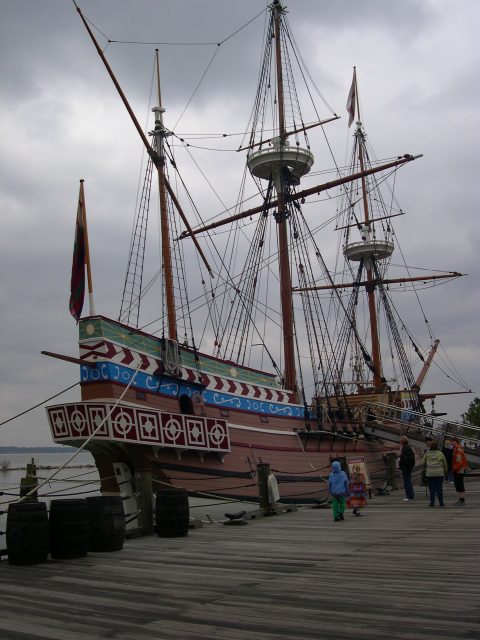
An English ship of a slightly later period: this is a replica of the Susan Constant at the Jamestown Settlement in Virginia. The original ship was built sometime before 1607 and rented by the Virginia Company of London to transport the original settlers to Jamestown.
Photo by Nicholas Russon, March 2004.
Since about 1500, an Italian and Portuguese method of making ships had come into ever wider use in northern Europe. This was to construct the ship’s skeleton first, and then lay the planking around it. This contrasted with the older “clinker” method, by which the planks were laid from the keel upwards, with each plank slightly overlapping the one below – the rest of the skeleton was filled in later to strengthen it. The new “carvel” method, instead of having overlapping planks, allowed for a smooth hull. But it also required more planning.
The master shipwright had to first design full-sized templates, or frames, which were placed along the keel to determine the width and height of the hull, like cross-sections up and down the length of the ship. To the edges of these frames were then fixed ribbands — long, pliable boards running down the ship’s length. Altogether, the frames and ribbands formed a temporary, basket-like structure, to guide the moulding of the ship’s permanent hull around it.
But calculating the size of the frames at each point was tricky. After the placement of the first few, which might be pre-specified in size, the next ones along were typically determined according to the curve of the ribbands. Calculation was certainly involved, but it took place in the form or marking and adjusting the wood itself. Design and construction both took place in the shipyard, and through the medium of wood.
What Matthew Baker did in the 1570s was to take the design process out of the shipyard, and onto paper. He drew his ships, to scale. And by using pen and paper, with geometry to make such drawings possible, he opened up grand new possibilities for design. His process allowed him to jot down the latest innovations from the Mediterranean, to speculate about the designs of Noah’s ark and the ships of the ancient world, and to cheaply conduct his own experiments. He drew out new designs for frames, using geometry to work out how any variation would affect the overall shape of the hull, as well as its weight and carrying capacity – all at the cost of only time, ink, and paper, and avoiding the huge potential waste of conducting experiments at full scale in wood. His process allowed him to innovate more easily, and even to design new measuring instruments.
The Legend of Vlad the Impaler
Royal Armouries
Published 31 Oct 2017Hear the story of the infamous tyrant Vlad Tepes, notorious for the grisly way in which he killed his enemies.
Where to find us:
⚔Website: https://royalarmouries.org/home
⚔Blog: https://blog.royalarmouries.org/
⚔Twitter: https://twitter.com/Royal_Armouries
QotD: Insincerity
I am pleased to report that this year’s [Halloween] tot army had more thank-yous per grabby hand than ever before. If gratitude was not forthcoming, the parent uttered the classic phrase “what do you say,” which produced the desired “thank you.” Insincere? Of course. Fine with me. Insincerity is the oil that lubricates polite society. Unless you prefer that the cashier shouts “just take your burger and DIE, I’ve had a NINE-HOUR SHIFT and my KID IS SICK” instead of nodding politely. I’m a big fan of insincerity. And I mean that from the bottom of my heart.
James Lileks, Star Tribune, 2004-11-01.


